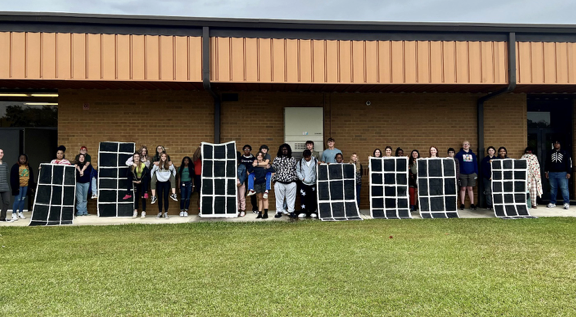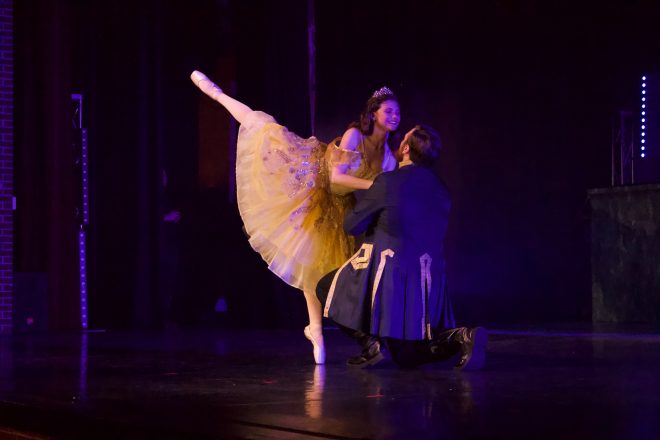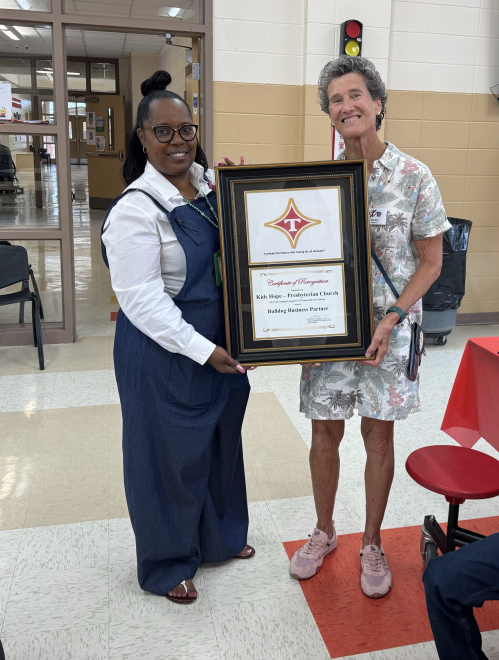Historic grant boosts Jack Hadley Black History Museum’s preservation efforts
Published 10:20 am Friday, October 27, 2023

- LENDING A HELPING HAND: Thomas County Central High School students with all 7 false windows created for the Shotgun House.
THOMASVILLE — In a stride toward preserving the rich African American history of Thomasville, the Jack Hadley Black History Museum recently received a $10,000 matching grant from The 1772 Foundation and The Georgia Trust. This generous contribution will be instrumental in breathing new life into the museum’s iconic 1907 shotgun house, which has borne witness to generations of history but was in dire need of rehabilitation. The efforts undertaken encompass several essential steps to ensure that the building retains its historical significance for generations to come. The restoration project aligns closely with The Secretary of the Interior’s Standards for Rehabilitation and Guidelines for Rehabilitating Historic Buildings, ensuring that the process adheres to the highest preservation standards. This meticulous approach includes mothballing the structure to protect it during the rehabilitation process, thereby safeguarding its architectural integrity.
One of the most significant phases of the project involved the delicate task of lifting the shotgun house from its original brick struts onto a robust steel beam. This meticulous maneuver allowed for the restoration of the original bricks, ensuring that the building retains its historical charm.
The restoration initiative has also seen the removal of all original and historic windows, which will be meticulously restored to their former glory. This level of care is a testament to the commitment to preserving not only the physical structure but also the stories and memories ingrained in the very fabric of the building.
In a heartwarming addition to the project, art students from Thomas County Central High School, under the guidance of their art teacher Maria Pittman, lent their creative talents to the cause. These students created false windows out of canvas to cover the lifeless plywood where the historic windows once graced the house. This thoughtful contribution not only enhances the aesthetics of the house during the restoration process, but also symbolizes the communal spirit that has come together to breathe life back into this historic landmark.
The significance of preserving the shotgun house extends beyond bricks and mortar; it lies at the heart of preserving the story of African-American history in Thomasville. The Jack Hadley Black History Museum is a repository of the collective memory of African Americans in the region, and the shotgun house is a tangible link to that history. It holds within its walls the stories of triumph and struggle, resilience and creativity, and the enduring spirit of the African American community.
Mr. Daniel Pittman, Executive Director of the Jack Hadley Black History Museum, emphasized the importance of preserving this historic building, stating, “This grant is not just about restoring a house; it’s about preserving African American history. The shotgun house is a testament to the African American experience in Thomasville, and it’s crucial that we protect and honor that history for generations to come. I also want to give a special thanks to Ms. Melanie Martin our grant writer, Ms. Nancy Tinker, Executive Director of Thomasville Landmarks, and Mr. Eric Menninger from EAM Preservation for their help with moving this project forward. This project is a team effort and reflects our community coming together to celebrate and preserve African American History.”
The Jack Hadley Black History Museum stands as a beacon for education, cultural awareness, and a celebration of the contributions and achievements of African Americans in Thomasville and beyond. This restoration project, with the gracious support of The 1772 Foundation and The Georgia Trust, embodies the commitment to preserving and sharing the vital stories of African American history, reminding the public of the invaluable role that historic buildings play in the understanding of the past.





